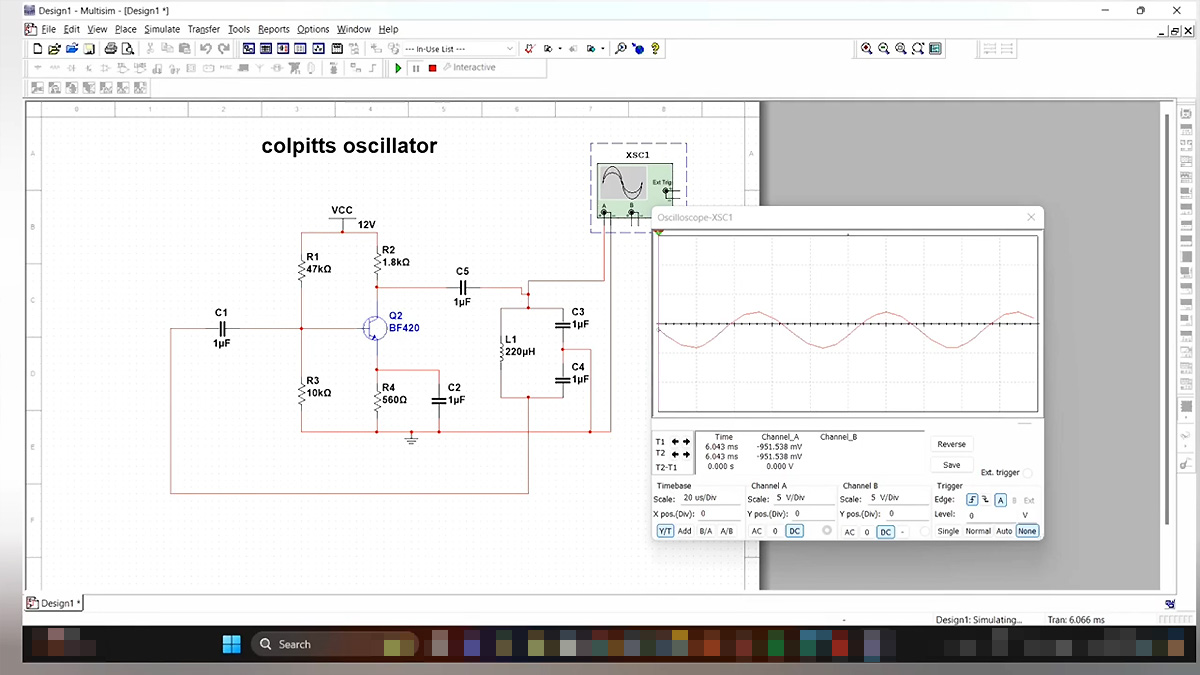Mastering Circuit Simulation: A Comprehensive Guide to Colpitts Oscillator with NI Multisim

If youve ever found yourself struggling with circuit simulation and ended up with a flatline instead of the smooth sine wave you were hoping for, then youre in luck! A new video tutorial by saisri offers an insightful walkthrough on simulating a Colpitts oscillator using NI Multisim 14.3, an essential software tool that's popular among electronics enthusiasts and professionals alike.
The Colpitts oscillator is a classic analog circuit revered for its ability to generate stable sine waves. While it might seem deceptively simple, this circuit requires precision in both design and execution. In her video, saisri not only provides guidance on how to place and wire components accurately but also emphasizes the importance of attention to detail throughout the entire process.
One of the standout features of this tutorial is the focus on wiring accuracy at multi-node junctionsa common area where many tutorials tend to gloss over. saisri highlights that a single misconnected node in Multisim can result in the circuit outputting nothing, or zilch, which can be incredibly frustrating for both novice and experienced users. By addressing these common pitfalls, she enhances viewers' understanding of circuit behavior and simulation integrity.
The tutorial begins by guiding viewers through the essential steps, starting with component selection via the intuitive Place > Components dialog in NI Multisim. From there, saisri walks through the process of wiring the circuit correctly, running the simulation, and interpreting the resultant sine wave output displayed on Channel A of the software. This detailed, step-by-step approach ensures that even those new to circuit simulation can follow along with ease.
At the conclusion of the video, viewers will find a valuable bonus: a manual that bundles relevant theory, waveform visuals, and circuit diagrams into a handy PDF document. This resource serves as a perfect reference for anyone looking to deepen their understanding of the Colpitts oscillator and the intricacies of circuit simulation.
If you have a passion for precision hacking, a love for retro analog technology, or simply enjoy watching a sine wave bloom beautifully onscreen, this tutorial is definitely worth your time.
You can watch the original video
